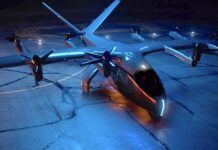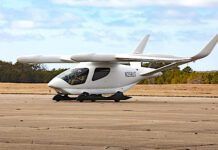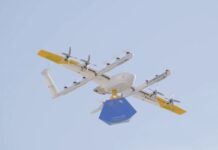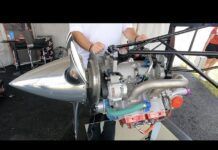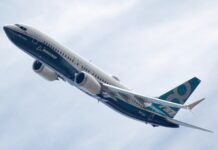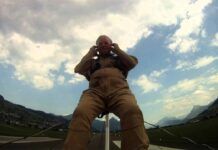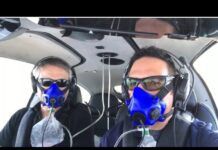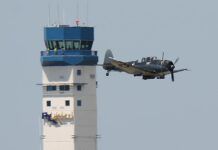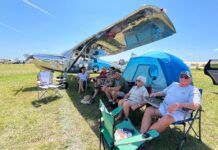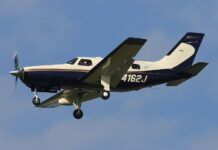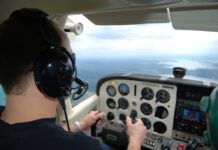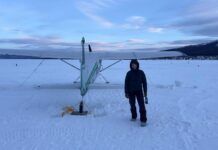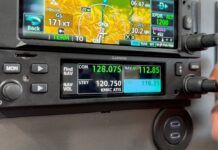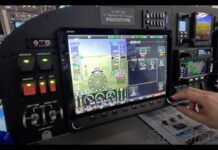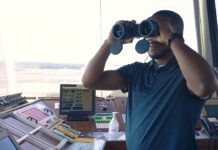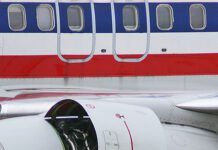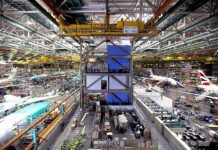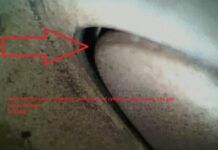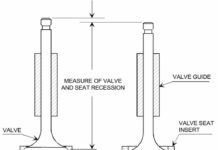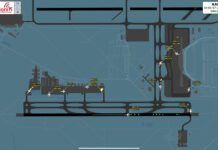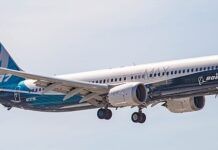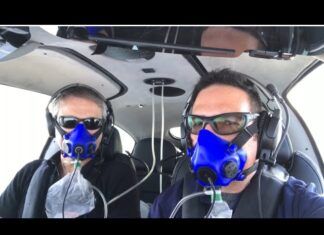
In a perfect avionics upgrade, it’s out with all of the old and in with the new. For some owners at the top of the economic food chain, this is the case every five years, sometimes sooner. For the rest of us, avionics upgrades are few and far between and the key to saving a grand here and a grand there might require retaining equipment that’s getting, well, ancient.In many cases, there’s nothing wrong with mixing old stuff with the cutting edge, if you understand the shortcomings and can accept the operational and aesthetic limitations. In this article, we’ll sort through which of the most common older avionics are worthy of continued repair and suggest where it’s time to draw the line and ditch the old for a replacement. Since we last examined this topic five years ago, technology has marched boldly forward and what applied then doesn’t apply now.
Things You Don’t Need

215
We’re often surprised at the number of owners that still rank an ADF system at the top of the most useful gear in the panel. We know many pilots cut their IFR teeth chasing ADF needles but in real-world ops, GPS is the better, safer way to go. (Unless you have an older GPS — see “GPS from the Golden Age” at right.) There are but a few ADFs worthy of repair dollars and perhaps just one, the Bendix/King KR87. This digital system is a good performer that takes little panel space and is still standard equipment in most digital, Silver Crown packages.But it’s not cheap to repair. Common failures are often a result of moisture and include gas-discharge display replacements (a few hundred bucks) and antenna problems. This system uses a combined loop/sense antenna — either the KA44 or KA44B. The KA44 is a thick-blade antenna found on the belly of larger twins and some bigger singles, too. It’s also out of production. The current-production KA44B is a streamlined oval and while this design eliminates the long wire sense antenna found on top of many airplanes, you can expect to spend up to $1200 to replace it. It’s your money but we don’t think it’s worth spending this much on an ADF.Older systems such as KR85s and KR86s might require expensive band switches and cam-gear replacements and just aren’t worthy of repair in the estimation of many shops. Most Narco, Collins and ARC systems are piling up in scrap bins and although Cessna made a good ADF, the R546 series, it too is expensive to fix. If you must, order an exchange through Airwich Avionics in Wichita, an honest and capable ARC shop with reasonable exchange pricing.How about DME? Do you still need it? In most cases, an approach-approved GPS will provide sufficient data for approaches that otherwise require DME, yet some owners still want to retain these boxes. Some are worth fixing, some aren’t.The Bendix/King KN64, KN62 and KN63 series lead the pack of desirable DMEs. These are current-production units that require little real estate in a crowded panel. The KN62A is a higher-powered model of the KN64 and in most airplanes the KN64 works fine unless you’re rocketing along at near-mach speeds, in which case you’ll need the high-powered KN62A for reliable lock-on.Overall, these units are reliable and readily repairable by most shops. But like anything else, a shop visit can cost several hundred dollars. Gas discharge displays cost several hundred dollars, as do photo-cell replacements, all considered routine maintenance for Silver Crown gear. Similar in physical design to the KN64 is the Narco DME890. This is a flat-pack DME with a good reputation for reliability. As with most Narco products, factory repairs are often the only solution and repair costs reflect this service. If you have a DME890 and it works, we don’t see any reason to give it up unless it has a major failure. Weak receiver problems — the classic symptom of poor range — could be the result of faulty solder connections at the diode network in the receiver section. A few hours on the bench could be worth it, but no more, in our view.The KN63 is the flagship Bendix/King DME, using a remote receiver/transmitter and small, digital, control head. It has proven to be reliable but pricey to install. The KN62 through the KN64 series are liberal when interfacing with modern navigators like Garmin’s GNS530/430 series, providing remote serial channeling. Heavy old clunkers like the KN65 series and Narco DME195 units are boat anchors. If they stop working — and most already have — we say remove them and expect sizeable gains in useful load.
Nav/Comms

300
Nav and com equipment are must-have essentials and there’s little tolerance for poor performers. The small-airplane nav management system craze raises a common question among owners: What units are worthy of a secondary back-up to a new GNS430 or GNS480?Our top choice is the Bendix/King KX155. While there are many flavors and vintages, most are worth the cost and effort to repair. Earlier generation KX155 and KX165s used socket-mounted ICs that were responsible for channeling and display-related problems, but later models use more robust surface-mount technology. The flip side of this, however, is that little in the way of small component replacement is possible. This drives up the repair costs since many repairs will be board-out, board-in affairs. A trip to the Honeywell factory could yield a hefty repair bill so you might question your shop as to which is more cost effective, an exchange or repair. If you’re among the unlucky few to have a unit with a missing data identification tag, the radio is unworthy of factory service. Period.It’s tempting to retain the ancient KX170B. But in general, these are marginal back-up radios. Although they work well and require minimum upkeep, major repairs are ill-advised. How many electronics in your home are 30 years old? That’s about the age of some KX170Bs.Digital Narco MK12Ds can require hefty factory-repair costs. Common problems include faulty display assemblies, nav converter failures (many hundreds of dollars) to failure of meter assemblies in the ID824 and ID825 indicators, at over $1000. With complaints about Narco factory repair practices, many owners think twice about spending money on Narco radios. That’s unfortunate, for these are high-quality boxes.Narco Com810 and Com811 comm radios are basically MK12Ds without the nav functions and we think they serve as good secondary radios. The same is true of the King KY196 and KY197, although these radios have a long list of published service mods to address receiver, squelch and transmit problems. If you have either and have trouble, we think they merit little more than $100 worth of repair. While self-contained Narco NAV121 and Nav122 nav units pack a big punch in a 3-inch instrument hole, they’ll likely put a big hole in your bank account if they fail. Narco makes a version of this popular radio and if space issues force you to keep this design, consider an upgrade if you absolutely must, rather than spending money to replace meter assemblies in an older Nav122.The King KNS80 and KNS81 nav units often accompany the KY196/197 standalone coms in many late 1980 airframes and while the KNS80 can be a decent albeit primitive nav system, it takes a good chunk of panel space. These RNAVs are a dime a dozen on the used market, having been displaced by Garmin mapcoms. If you have a good one, we don’t see why you shouldn’t keep it, at least for the short term. But if it breaks, mull it over and think hard before throwing money at fixing it.How about digital replacement radios like the TKM MX300 (for Cessna radio replacement) and MX170 for KX170-series replacement? Factory repair costs for these units at the TKM factory in Scottsdale are reasonable but the FAA recently forced the company to obtain repair-station status, despite their long-time manufacturer certification. We wonder if the extra paperwork will increase repair costs. These sell for under $2000 new so any repair over $500 may not be worth it. We aren’t fans of direct, slide-in replacement radios, as the health of the wiring and installation hardware is as important as the radio itself.Collins MicroLine VHF and VIR series comms and navs are no longer supported by S-TEC/Meggitt, although the factory will ship service parts to their dealer networks. If repairs will exceed anything more than display segment replacements, a newer radio might be a better choice. Last, any radio that sports 360 channels has lived its last. Ditch one if it breaks. The 14-volt RT328 series ARC radios run a close second, with synthesizer failures qualifying the radio for the trash. A 28-volt digital RT385 unit might be worthy of repair if it can be accomplished for under $300. But that won’t fix much.
HSIs and Autopilots

300
Unless your HSI is from the dawn of the steam age, you probably won’t relish replacing it once you see what new ones cost. HSIs are pricey, otherwise they would be standard in every airplane. It doesn’t seem to matter which model you have, all will cost a bundle when they break. As we reported in the January 2005 issue of Aviation Consumer, the vacuum-driven and self-contained Century NSD360A has an average overhaul cost of $2700, not including removal and reinstallation. Other HSI systems such as the Bendix/King KCS55A, have numerous remote components and, of course, the mechanical KI525 HSI itself. This system is worth repairing and you should expect to do so at a premium price; it’s a keeper.Collins PN101 systems are still in service and repairs are usually prudent. But systems such as the Narco HSI 100, an old, self-contained electrical unit, is no longer practically repairable. We don’t suggest any repair attempts to this unit, or the even older DGO series of HSIs. They retired years ago. Similar advice applies to older Bendix HSIs, the IN831 series. The major instrument shops won’t overhaul this unit but some work them at a by-the-hour rate for repairs based on specific problem.Autopilot repairs can quickly escalate beyond reason and because you can have a new, dual-axis, S-TEC system installed for about $10,000, the decision to repair an older system is relatively straightforward. Cessna, Piper and Century systems are showing their age and while gyro replacement can solve many autopilot problems, establish a limit on how much you’ll spend. One shop told us that they tell customers that repair work for out-of-production autopilots shouldn’t exceed $3000, based on the long list of available S-TEC replacements.We agree that anything over this amount might be better spent on a modern system that can add to the overall value and utility of the airplane. The most expensive part of autopilot work seems to lie in the servos. It’s not uncommon for a single servo replacement to cost nearly $2000. Replacements for some Century models just aren’t available and for those, factory repair attempts are the only option.Older Bendix/King systems such as the KFC200 use remote computers and earlier versions of the KC295 flight computer aren’t worthy of repair due to internal parts that have exceeded their useful life. The Honeywell Flight Control support staff tells us that it would be impossible to make some of these older computers perform to new specs and repairs to some early models are just uneconomical. This isn’t to say that KFC200s in general aren’t worth repairing; they’re fine autopilots. But you’ll need the guidance of a seasoned shop if you need to fix one. The general health of a system can usually be determined by its performance in flight and through a couple of hours of troubleshooting by a savvy shop that knows your model of airplane.It’s impossible to comment on every type of avionics still in service. But more of what’s out there is very old than very new. If a shop doesn’t want to fix an older box, it’s often because they know the owner will come back with the same box broken again. Think about that if you decide to push for a repair when replacement is an affordable option.
More articles about avionics are found in AVweb’s Avionics section. And for monthly articles and reviews of aviation products, subscribe to AVweb’s sister publication, Aviation Consumer.



